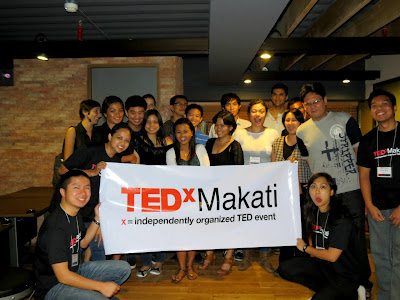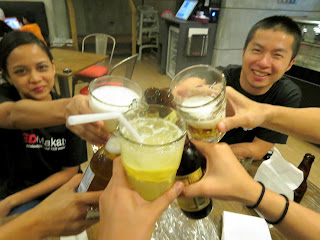 |
Photo taken by Tomomi Endo (April 2012)
Thanks for your never-ending support sensei! |
I haven’t experienced “four seasons” (since The
Philippines has only rainy and sunny days) and lately, since I’ve been
surrounded by a lot of Japanese friends, co-workers and even Taku, I’ve seen
the appreciation of the Japanese in the change of seasons that I find very
admirable. I’ve received some emails from friends sending me photos of how
beautiful the changes are and even when Taku went to a business trip in Japan
last week, he sent me an email saying that he had seen “cherry blossoms.”
But my admiration to the Japanese traits and
values was supported by the little fact that I’ve learned lately, that they
even have the traditional celebration/party for flower viewing which is called
Ohanami or less formally, Hanami (comes from the kanji for flower, hana and the kanji for “looking” or “to
see,” mi which means exactly what it sounds
like: looking at flowers). According to my friends, it takes place on no
specific day which can be practiced any time during spring where they simply
observe and appreciate the sophistication of spring – particularly sakura ume and momo blossoms (cherry, plum and peach, respectively). Japanese
people do their good old parties under the picturesque cherry blossom trees
with bento lunches and mats. They party with different groups- family and
friends, and it usually involves a lot of sake. I was amazed with the story that it is a job
of the lowliest grunt in the office to go out early in the morning to the place
where his bosses want to party later on that evening with a mat and stake out
of a choice spot under the trees where he’ll sit all-day. How families try to
teach the kids to appreciate spring is adorable also especially since cherry
blossom don’t last that long.
Ohanami
actually started as umemi, or
plum blossom-viewing. That’s because back in the Nara period (710-784) – when
flower-viewing is said to have first become a tradition – plum blossoms were
gaining favor as symbols of culture and nobility. Ume trees had been introduced
to Japan by envoys returning from China, who’d been enamoured with the Chinese
spectacle of blossom observation and sought to impress Japanese nobles. By the
Heian period (794-1185) ohanami had become a regular practice among the
higher classes and was observed by eating and drinking outside. We also know
from Lady Murasaki Shikibu’s Tale of Genji, a
classic novel from the period that by then cherry blossoms had overtaken plum
blossoms in terms popularity and become the primary flower associated with the
ohanami tradition.
By the Edo
period (1603-1867), the practice of finding a spot in the blossoming fields to
enjoy sake and special bento had become a pastime for the common people.
Many plum
blossom-themed poems appear in the Manyoshu,
Japan’s oldest poetry anthology, and the fleeting beauty of both ume and sakura are recurring themes in classic Japanese
literature. Along with singing, reading such poetry has become common practice
in today’s ohanami celebrations.
I like how Justhungry.com talked about the cherry blossoms and its leaves as food.
I appreciate how Japanese people (especially my Japanese friends and
colleague) appreciate little things and every natural process in our
environment. I guess it talks a lot about how sophisticated and humble people
they are.
It’s officially
on my list of “30 Things Before 30” now; Cherry Blossoms are way too
beautiful.








